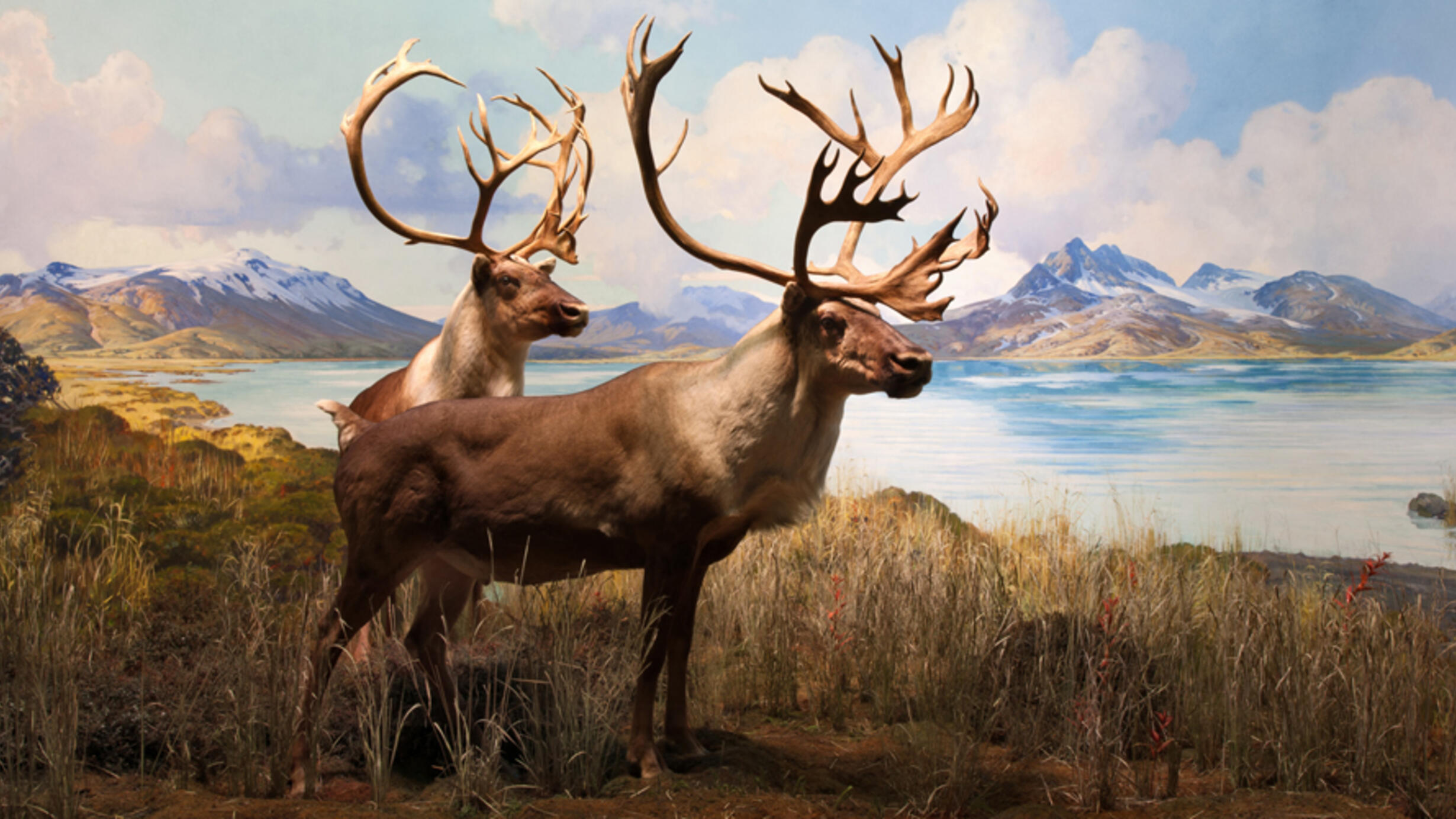Caribou
Part of Hall of North American Mammals.

September, Alaska Peninsula
Caribou, also known as reindeer, flourish in some of the world’s harshest places. Their principal home is tundra—land that is too cold for trees to grow. Massive herds of caribou migrate across the vast tundra plains of the Arctic. Smaller herds dwell in alpine tundra, which is found on top of high mountains.
These two males belong to an alpine tundra herd in the Aleutian Range. Come winter, they will subsist on lichens—a food few other species will eat. Caribou themselves are important food for predators such as wolves, brown bears and humans. Thanks to caribou, even low-growing, low- quality lichens can support the web of life on the harsh tundra.
Traveler of the Tundra
The Great Caribou Migrations
No migrating land mammal treks as far as Arctic caribou do. Summers are spent eating nutritious grasses and shrubs on the flat, treeless northern tundra. But as winter approaches, tundra gets inhospitably cold, even for caribou. That’s when thousands of them begin walking, often single file, to warmer environments where lichens and other forage can easily be found under shallower snow. Come spring they return to the tundra. Round-trip, Arctic caribou average 1,800 miles (3,000 km) a year.